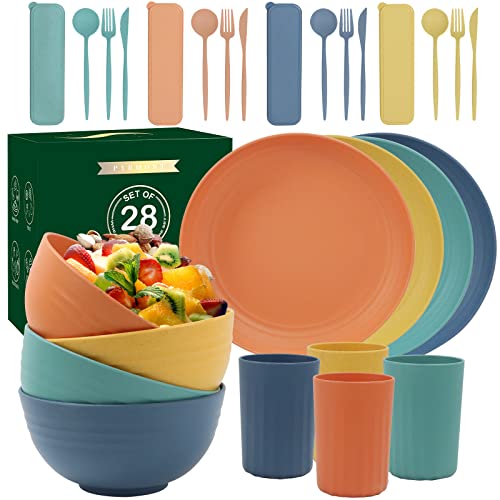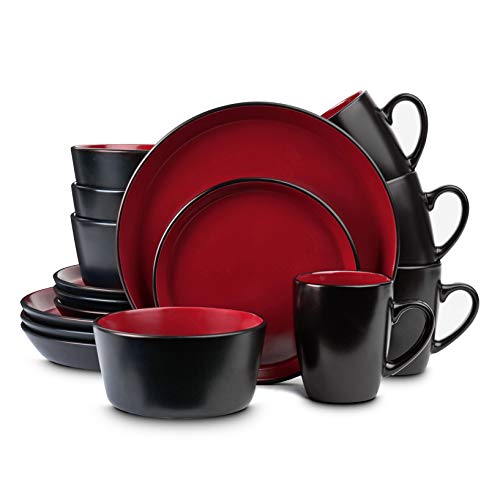
A microwave is a kitchen appliance that accumulates grimes surprisingly fast, which is why it’s essential to clean this appliance to keep it in good working condition.
Here is how to clean a microwave in 10 easy steps:
Table of Contents
1. Create a steaming solution with water and distilled white vinegar

Pour a cup of water into a microwave-safe bowl and add a tablespoon of white vinegar. If you don’t have vinegar handy, adding 2-3 slices of lemon, lime, or orange is a great alternative.
2. Add baking soda to the solution to get rid of odor

Baking soda is a versatile ingredient that is known for its ability to absorb odors, which is why you may want to stir it into your solution if your microwave smells.
3. Microwave the solution for 5 minutes

Place the bowl with the solution in the microwave and let it heat for 5 minutes or until the water begins to boil and create steam.
4. Wait a couple of minutes before opening the microwave
Wait for around 5 minutes before opening the microwave door. If you open the microwave too quickly, the steam will escape, and the bowl with the cleaning solution will be too hot to hold.
5. Remove the bowl of solution and the microwave turntable

Carefully take out the bowl of solution you steamed earlier, and then lift the turntable off its track to clean it. You might need to wear oven mitts to protect your hands. Wash both sides of the turntable with warm soapy water. If it has burnt-on stains, soak it in hot soapy water for about 30 minutes to make it easier to clean.
6. Scrub the interior of the microwave with a sponge or cloth

If you don’t cover food when you place it in the microwave to cook, you’ll likely notice splatters in every direction of the interior surface. Dip a cloth or sponge into warm soapy water or the cleaning solution you made earlier and use it to wipe away all the food debris and grease on the bottom, top, sides, and door of the microwave interior.
7. Wipe the interior with a dry, lint-free cloth
Once you’ve finished scrubbing the appliance’s interior, take a paper towel or a dry, lint-free cloth and use it to wipe the inside of the microwave until it’s completely dry.
8. Put the turntable back

Carefully put the turntable back into the microwave to rest on its tracks. If the turntable is not in place on the trails, it may not rotate properly when the microwave is in use.
9. Dip a cloth into soapy water and use it to wipe the outside of the microwave
Dip a cloth into the warm soapy water and use it to clean the display panel, the top, and the sides of the microwave. Don’t forget to wipe the door handle as well.
10. Wipe off with a clean damp cloth

Use a new damp cloth to wipe off the entire microwave.
How to remove stubborn stains from your microwave
- Use a baking soda paste to remove grease stains
Mix baking soda and a bit of water to make a spreadable paste. Rub the paste over the greasy areas of the microwave before wiping it away with a wet cloth. You can also use grease-cutting dish soap to remove grease stains.
- Wipe away old stains with nail polish remover
If you use an older microwave, it probably has yellow stains from years of use. Dip a cotton ball in acetone nail polish remover and rub the old stains until they lift to remove these stains. To remove the harsh acetone smell, wipe the microwave down with a citrus solution.
How often should you clean your microwave?
There are no hard and fast rules for how often you should clean your microwave. That said, you should aim to wipe down the microwave interior after every use to remove any lingering moisture to reduce the risk of corrosion to the appliance’s cavity and door. If food splatters, make sure to clean it off immediately to prevent it from burning into the cavity. Generally, microwaves should be cleaned at least once a week, depending on how often you use them, but it’s much easier to quickly wipe down your appliance after each use to prevent buildup.
The 10 steps to keep your microwave in top condition
Microwaves are cheaper to replace than other larger appliances you may have in your kitchen, so many people are not too keen on preventative care. In addition to keeping your microwave clean, here are other easy tips to help keep your microwave in excellent condition, so you don’t need to replace it for a long time.
1. Choose dishware carefully
Avoid using materials that are not microwave-safe as they can cause explosions or fires. For the sake of safety and the longevity of your microwave, stick to microwave-safe containers. Steer clear of metal, aluminum foil, dishware with silver or gold accents, and non-microwavable plastic containers.
In most cases, glass, ceramic, and tough plastic items are safe to microwave, but there are some exceptions. Look for the microwave-safe label on dishware beforehand to be on the safe side. If you’re heating food in your microwave and notice that the container or dishware you’re using becomes significantly hotter than the food, then you should steer clear of that item in the future.
2. Cover your food
Make a point of using a microwave-safe plastic cover over a dish or keeping your microwave-safe food containers covered with lids when heating food in the microwave. Splashes commonly occur during the microwaving process as the food heats up. Preventing them from hitting the microwave’s walls will make cleanup easier and protect the metal and paint of the oven.
3. Avoid running on empty
Running a microwave without anything to heat inside it can cause significant damage to the appliance. When a microwave runs empty, the energy it produces must be absorbed by its own components, such as the glass plate or the magnetron that emits the energy. These components are not built to withstand this kind of exposure, and replacing or repairing them can be pretty costly. If you often use your microwave as a timer, most microwaves come with a separate timer function that keeps track of time without producing any internal energy.
4. Prevent door damage
At one point or another, you may have pushed your microwave door shut with an elbow because you’re carrying food, pulled it open without first turning off the microwave, or slammed it shut. All these actions may seem insignificant, but they cause gradual damage to your appliance. Microwave latches are quite complex – some of them have as many as three switching mechanisms that must close in a particular order. Closing the microwave door carefully can be detrimental to these switches. Pulling the door open while the microwave is still running, in the meantime, can cause a blown safety fuse.
5. Respect weight limitations
In most cases, the weight capacity of a microwave is of little to no concern since many dishes and foods are typically below this capacity. However, if you plan to warm large frozen items or heavier dishes, be sure to check the weight capacity of your appliance. In most models, you can find it printed on the microwave door; if not, look in the owner’s manual or online. Excessively heavy items can strain the turntable and its motor and cause mechanical damage to central components like the magnetron. This can result in a damaged microwave and food that is unevenly cooked.
6. Try pre-programmed cooking times
The preprogrammed cooking times on a microwave are designed to make the most efficient use of the unit by minimizing energy loss and heating the food evenly. Try using these preset cooking modes, and you may find that your food is heated more efficiently, but you’ll also help reduce the occurrence of issues such as messes that result in burn spots.
Related article: What Cleaning Supplies Do I Need For An Apartment?
7. Guard against power surges
Power surges are triggered by downed power lines, grid switching, and lightning. Microwaves are especially prone to damage as a result of power surges. Unplugging your microwave between uses will help save energy and reduce the risk of damage. Alternatively, you can plug your appliance into a surge protector.
Related article: How Can I Disinfect My Apartment?
8. Keep up with replacements
Keeping up with routine maintenance significantly reduces wear and strain on your microwave. Replacing unit parts such as door latches, charcoal filters, light bulbs, turntables, and turntable motor is safe and quite affordable.
Related article: How often should you clean your apartment?
9. Avoid drying non-food items in the microwave
It can be tempting to dry small damp clothing in the microwave quickly. However, this should be generally avoided as some materials can flame and cause damage to the microwave cavity and even your home.
Related article: How Do You Air Out A Room Quickly?
10. Listen for unusual noises from your microwave
Unusual noises from your microwave may indicate that a belt is faulty or that the motor needs to be checked. Pay attention to the bell or buzzer that alerts you when the microwave finishes heating food and promptly remove the food. While you may be able to handle some minor microwave repairs and replacements, you’ll want to call a qualified professional for help when it comes to anything electronic.
Related article: How Do Professionals Clean Apartments?
Final thoughts
To keep your microwave – and avoid nasty smells and stuck-on messes – make sure to clean up splatters and spills as soon as they happen and wipe the interior down at least once a week.
Last update on 2023-04-16 / Affiliate links / Images from Amazon Product Advertising API




